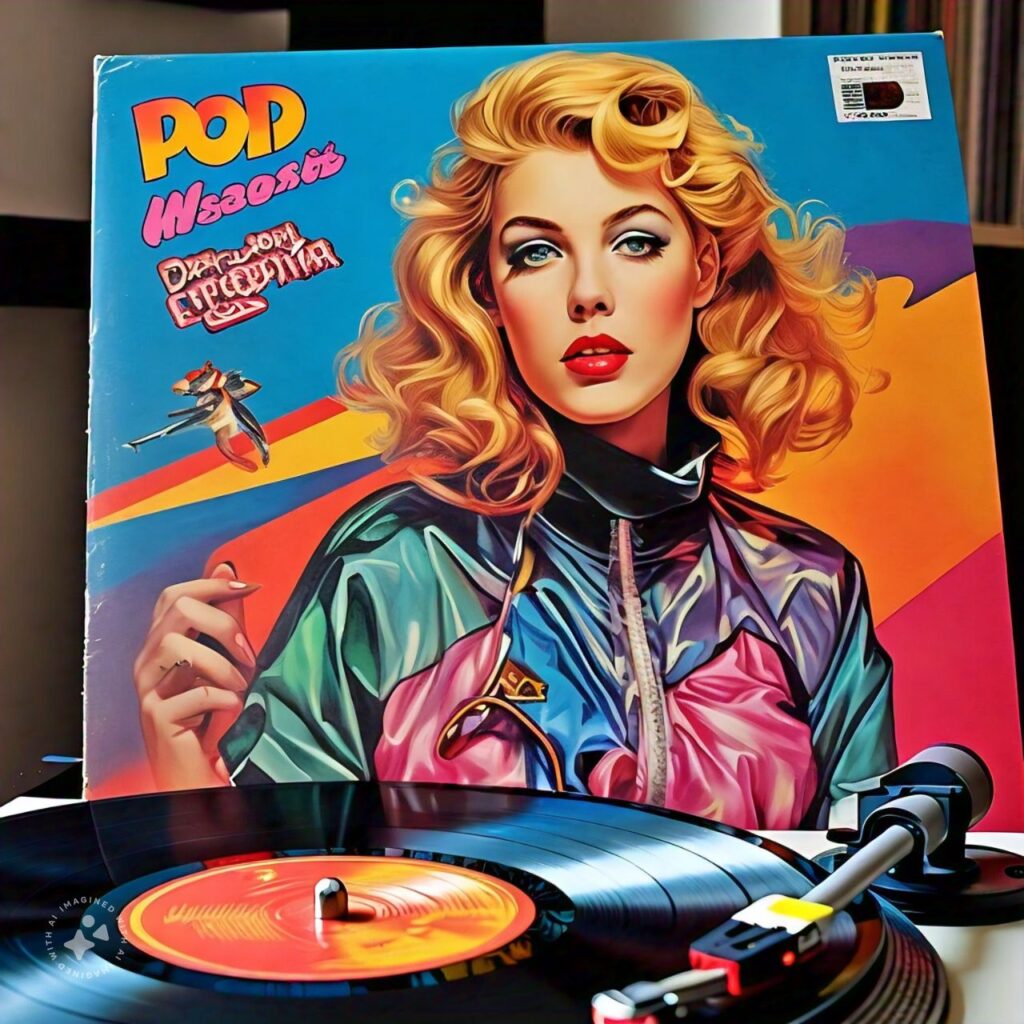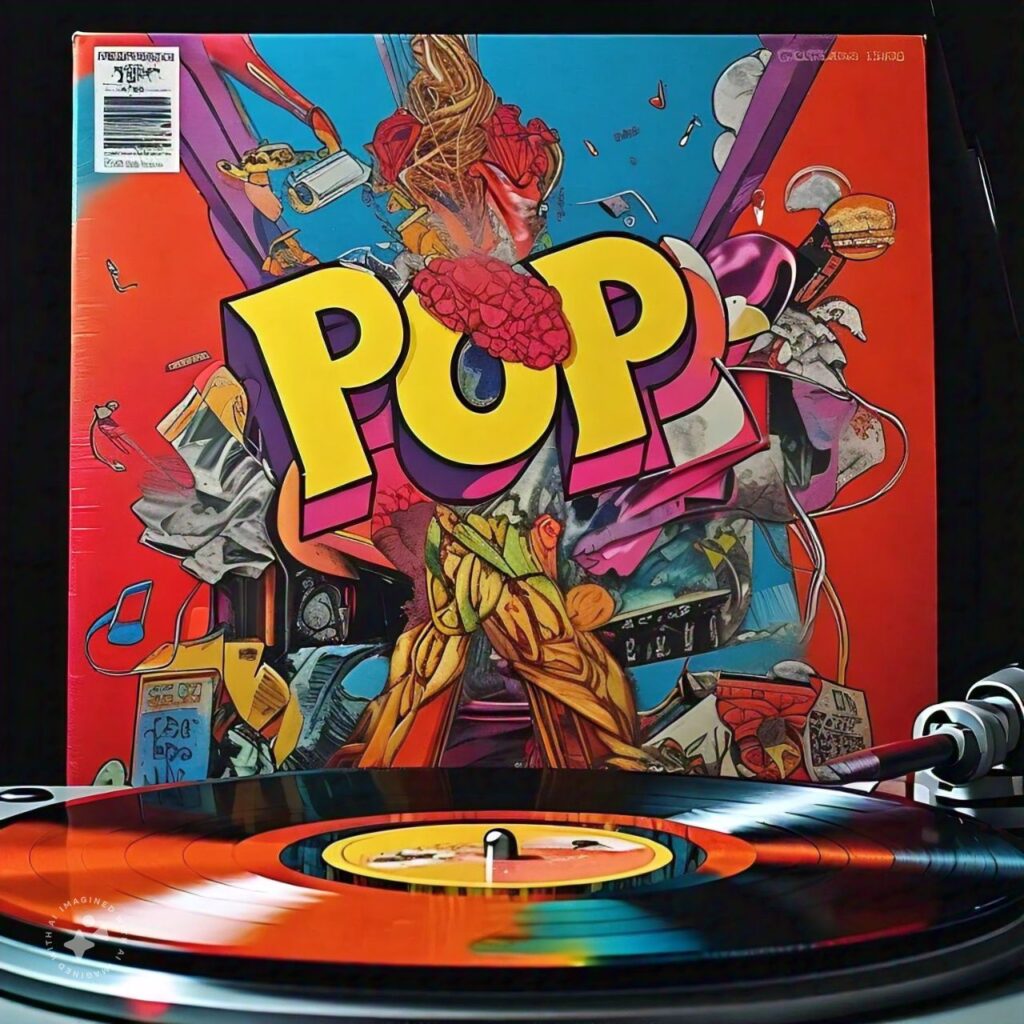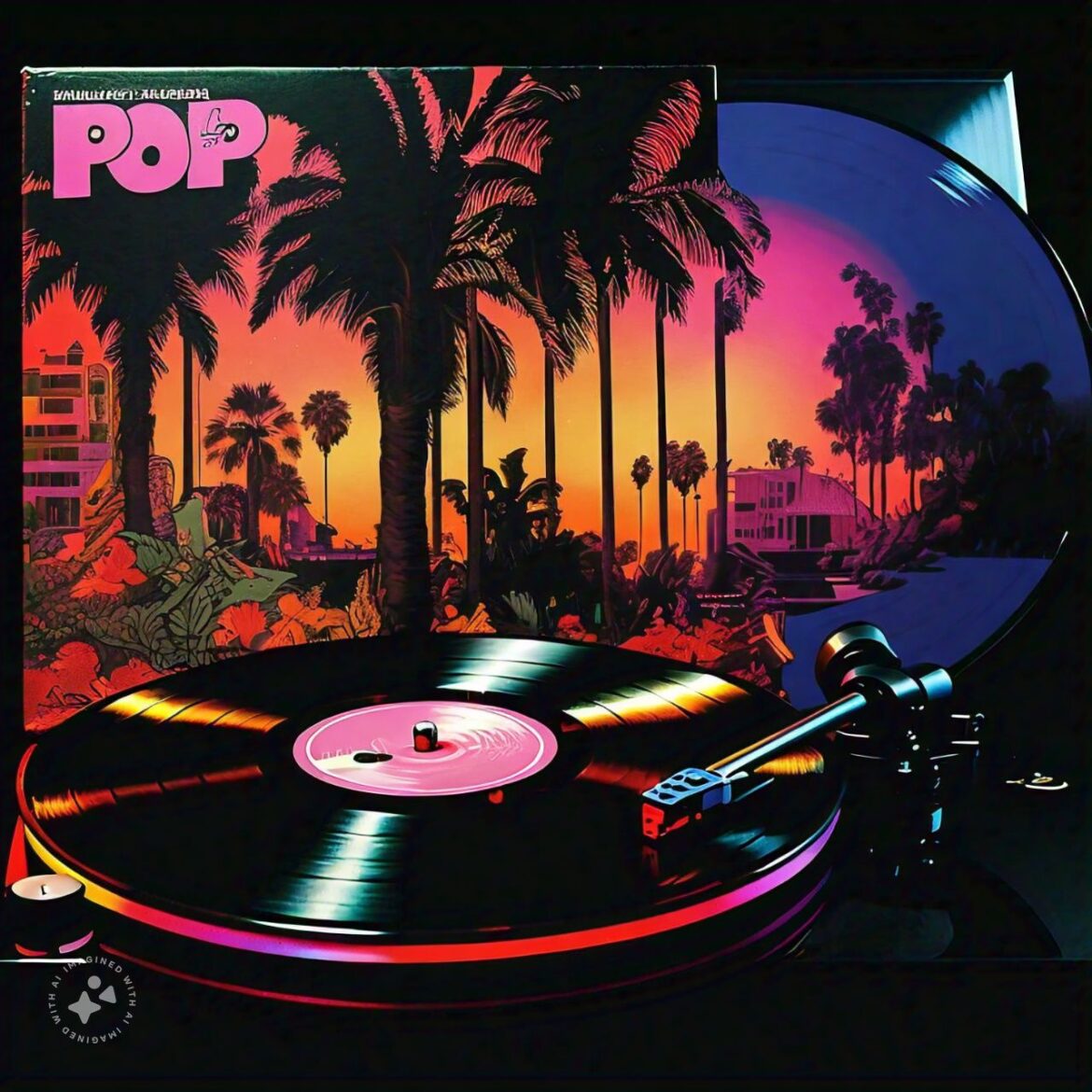Pop music is everywhere. From the radio to shopping malls, we hear pop songs all around us. But what exactly makes a pop record so special? In this comprehensive guide, we’ll explore everything you need to know about pop records in simple, easy-to-read language. Whether you’re a new listener or a pop music fan, this article will give you a deeper understanding of pop music.
What Is a Pop Record?
A pop record is a music recording that falls under the “pop” genre, which stands for “popular” music. Pop records are designed to appeal to a broad audience and are often characterized by their catchy melodies, simple lyrics, and upbeat rhythms. These records are crafted to be memorable and engaging, making them easy to listen to and enjoy.
Key Features of a Pop Record
- Catchy Melody: The melody is the part of the song that you can sing or hum. Pop songs have simple, repetitive melodies that are easy to remember.
- Simple Lyrics: The lyrics of pop songs are straightforward and often focus on universal themes like love, happiness, and heartbreak. This simplicity makes pop songs relatable to a wide audience.
- Upbeat Tempo: Many pop songs have a fast, danceable rhythm. This upbeat tempo makes them perfect for parties, workouts, or just lifting your spirits.
- Repetition: Pop songs often repeat phrases or choruses. This repetition makes the songs more memorable and catchy.
- Short and sweet: Most pop songs are three to four minutes long. This length is perfect for radio play and keeps listeners engaged without getting bored.
A Brief History of Pop Music

Pop music has evolved significantly over the decades, with each era bringing something new to the genre. Let’s take a closer look at how pop music has changed over the years.
1950s: The Birth of Pop Music
The 1950s are often considered the birth of pop music. During this decade, rock and roll emerged, and artists like Elvis Presley became cultural icons. His songs, such as “Hound Dog” and “Jailhouse Rock,” were among the first to be called “pop” because they were so popular with young audiences. Blues, jazz, and swing heavily influenced pop music during this time.
1960s: The British Invasion
The 1960s brought the British Invasion, a period when British bands like The Beatles and The Rolling Stones dominated the American music scene. The Beatles in particular revolutionized pop music with their catchy melodies, innovative songwriting, and charismatic performances. Songs like “I Want to Hold Your Hand” and “Hey Jude” became instant classics and still influence pop music today.
1970s: The Disco Era
The 1970s saw the rise of disco, a genre that brought dance music into the mainstream. Artists like ABBA, the Bee Gees, and Donna Summer created upbeat, danceable pop records that filled nightclubs and radio stations. The disco era was all about having fun, dancing, and enjoying life, which is a big reason why pop music is so closely associated with these themes.
1980s: The Rise of MTV and Pop Icons
The 1980s were a transformative decade for pop music, thanks in large part to the launch of MTV (Music Television). MTV changed the way people consumed music, focusing on music videos as a new art form. Artists like Michael Jackson, Madonna, and Prince became megastars, combining music with visually stunning videos. Michael Jackson’s “Thriller” is still one of the best-selling albums of all time, and its title track’s music video is considered one of the most iconic pop music videos ever made.
1990s: The Boy Bands and Pop Princesses

The 1990s saw the rise of boy bands like *NSYNC and the Backstreet Boys, as well as pop princesses like Britney Spears and Christina Aguilera. These artists dominated the charts with their catchy tunes, choreographed dance routines, and charismatic performances. The music was upbeat, fun, and often focused on themes of love and relationships, which appealed to teenagers and young adults.
2000s and 2010s: The Digital Age and Streaming
With the rise of the internet and digital music, the 2000s and 2010s brought significant changes to the pop music industry. Artists like Beyoncé, Rihanna, and Taylor Swift used social media and streaming platforms to reach global audiences. This era also saw the rise of electronic dance music (EDM), which influenced many pop songs with its heavy beats and electronic sounds. Hits like Lady Gaga’s “Poker Face” and Katy Perry’s “Teenage Dream” are great examples of how pop music embraced digital production and electronic influences.
2020s: A New Era of Diversity and Innovation
Today, pop music is more diverse than ever. Artists like Billie Eilish, Lil Nas X, and Dua Lipa are pushing the boundaries of the genre by blending different styles and sounds. The internet has made it possible for artists from around the world to share their music, leading to a more global and inclusive pop scene. For example, K-pop, a genre of pop music from South Korea, has gained massive popularity worldwide, with groups like BTS and BLACKPINK leading the charge.
How Are Pop Records Made?
Creating a pop record is a detailed process that involves many creative minds. Here’s a deeper look into the steps involved in making a pop record:
- Songwriting: This is where the magic begins. Songwriters come up with the lyrics and melody. Some artists write their own songs, while others collaborate with professional songwriters. The goal is to create a song that is catchy, relatable, and memorable.
- Production: The producer plays a crucial role in shaping the sound of the record. They decide what instruments to use, how the song should be arranged, and what effects to add. Producers often use software and digital tools to create beats and sounds that complement the melody and lyrics.
- Recording: Once the song is written and produced, it’s time to record the vocals and instruments. Artists usually record their vocals in a studio, where sound engineers ensure the best quality recording. The artist sings the song several times to capture the best performance.
- Mixing: Mixing involves combining all the different sounds (vocals, instruments, effects) into one final track. The mixer adjusts levels, adds effects, and makes sure everything sounds balanced and clear. This step is crucial for making the song sound polished and professional.
- Mastering: The final step is mastering, where the song is fine-tuned to sound its best on all playback systems, from car radios to high-end speakers. Mastering ensures that the song maintains a consistent sound quality across different platforms.
- Release and Promotion: After the pop record is finished, it’s time for the world to hear it! The record is released on various platforms like Spotify, Apple Music, and YouTube. Promotion is key to a successful release, so artists and their teams work hard to get the word out through social media, interviews, music videos, and live performances.
The Impact of Pop Music on Society

Pop music is more than just entertainment; it has a profound impact on society and culture. Let’s explore some of the ways pop music influences our lives.
Pop Music and Fashion
Pop stars are often trendsetters when it comes to fashion. From Elvis’s flashy suits to Madonna’s edgy outfits, pop artists have always pushed the boundaries of style. Today, stars like Harry Styles and Billie Eilish are known for their unique fashion choices that challenge traditional gender norms and promote self-expression.
Pop Music and Social Movements
Pop music has the power to inspire and bring people together. Over the years, many pop songs have become anthems for social movements. For example, Michael Jackson’s “Man in the Mirror” encourages listeners to make positive changes in their lives and the world. More recently, Beyoncé’s “Formation” has been praised for its powerful message about Black culture and empowerment.
Pop Music and Technology
Technology has greatly influenced pop music. From the invention of the electric guitar to the rise of digital music production, technology has allowed artists to create new sounds and reach audiences in innovative ways. The internet and social media have also played a huge role in how we consume music today. Platforms like YouTube, TikTok, and Instagram have become essential tools for promoting pop records and connecting with fans.
Popular Pop Records Through the Decades
Here are some of the most iconic pop records from different eras that have shaped the genre:
- 1950s: “Rock Around the Clock” by Bill Haley & His Comets: Often credited as one of the first rock and roll hits, this song helped lay the foundation for modern pop music.
- 1960s: “I Want to Hold Your Hand” by The Beatles: This song was a massive hit in the US and helped kickstart the British Invasion.
- 1970s: “Stayin’ Alive” by Bee Gees: A quintessential disco hit that defined the sound of the 1970s and still gets people dancing today.
- 1980s, “Thriller” by Michael Jackson: With its groundbreaking music video and infectious beat, “Thriller” remains one of the most iconic pop records of all time.
- 1990s: “Baby One More Time” by Britney Spears: This debut single launched Britney Spears into superstardom and is considered one of the defining songs of the late 1990s.
- 2000s: “Poker Face” by Lady Gaga: This song introduced Lady Gaga to the world and became a major hit, showcasing her unique style and catchy pop sound.
- 2010s: “Shape of You” by Ed Sheeran: A blend of pop and dancehall influences, this song topped the charts worldwide and is one of the best-selling digital singles ever.
- 2020s: “Blinding Lights” by The Weeknd: With its retro 1980s vibe, this song became a massive hit and was praised for its nostalgic yet fresh sound.
The Future of Pop Music

Pop music is always evolving, and the future looks exciting. Here are some trends that are likely to shape the future of pop:
- Genre Blending: Artists are increasingly blending different genres to create unique sounds. For example, artists like Lil Nas X mix country and rap while Billie Eilish combines pop, electronic, and alternative styles. This genre-blending trend is likely to continue, creating new and exciting sounds.
- Virtual Reality and Augmented Reality: With advancements in technology, virtual reality (VR) and augmented reality (AR) are becoming more popular. Artists are starting to experiment with VR and AR to create immersive music experiences. Imagine attending a virtual concert or interacting with your favorite pop star in a virtual world!
- More Personal and Authentic Content: In the age of social media, fans want to connect with artists on a personal level. Many artists are sharing more about their lives, struggles, and creative processes, leading to more authentic and relatable pop music.
- Sustainability in Music: As people become more conscious of environmental issues, the music industry is also making changes. From eco-friendly concerts to sustainable merchandise, artists and fans are looking for ways to reduce their environmental impact.
How to Discover New Pop Records
If you love pop music and want to discover new songs and artists, here are some tips:
- Explore Streaming Playlists: Platforms like Spotify and Apple Music have curated playlists that feature new pop songs and up-and-coming artists. Check out playlists like “Today’s Top Hits” and “Pop Rising” to stay updated.
- Watch Music Award Shows: Award shows like the Grammy Awards and the MTV Video Music Awards highlight some of the best pop music of the year. Watching these shows can introduce you to new artists and songs.
- Follow music blogs and magazines: Websites like Pitchfork, Rolling Stone, and Billboard provide reviews, interviews, and news about the latest in pop music. Following these sites can keep you in the loop about new releases and trends.
- Join Online Music Communities: There are many online communities and forums where music fans discuss their favorite artists, share recommendations and discover new music. Websites like Reddit’s r/popheads and music-focused Discord servers are great places to connect with other pop music lovers.
- Attend concerts and festivals: Live music events are a fantastic way to discover new pop artists. Many festivals feature a mix of well-known and emerging artists, giving you a chance to experience new music in person.
Conclusion
Pop music is an ever-changing and vibrant genre that continues to captivate audiences around the world. From its catchy melodies to its powerful impact on culture and society, pop records are more than just songs—they are a reflection of our times and a source of joy and inspiration. Whether you’re a fan of classic pop hits or the latest chart-toppers, there’s always something new and exciting to discover in the world of pop music. So put on your headphones, press play, and let the music take you on a journey!
